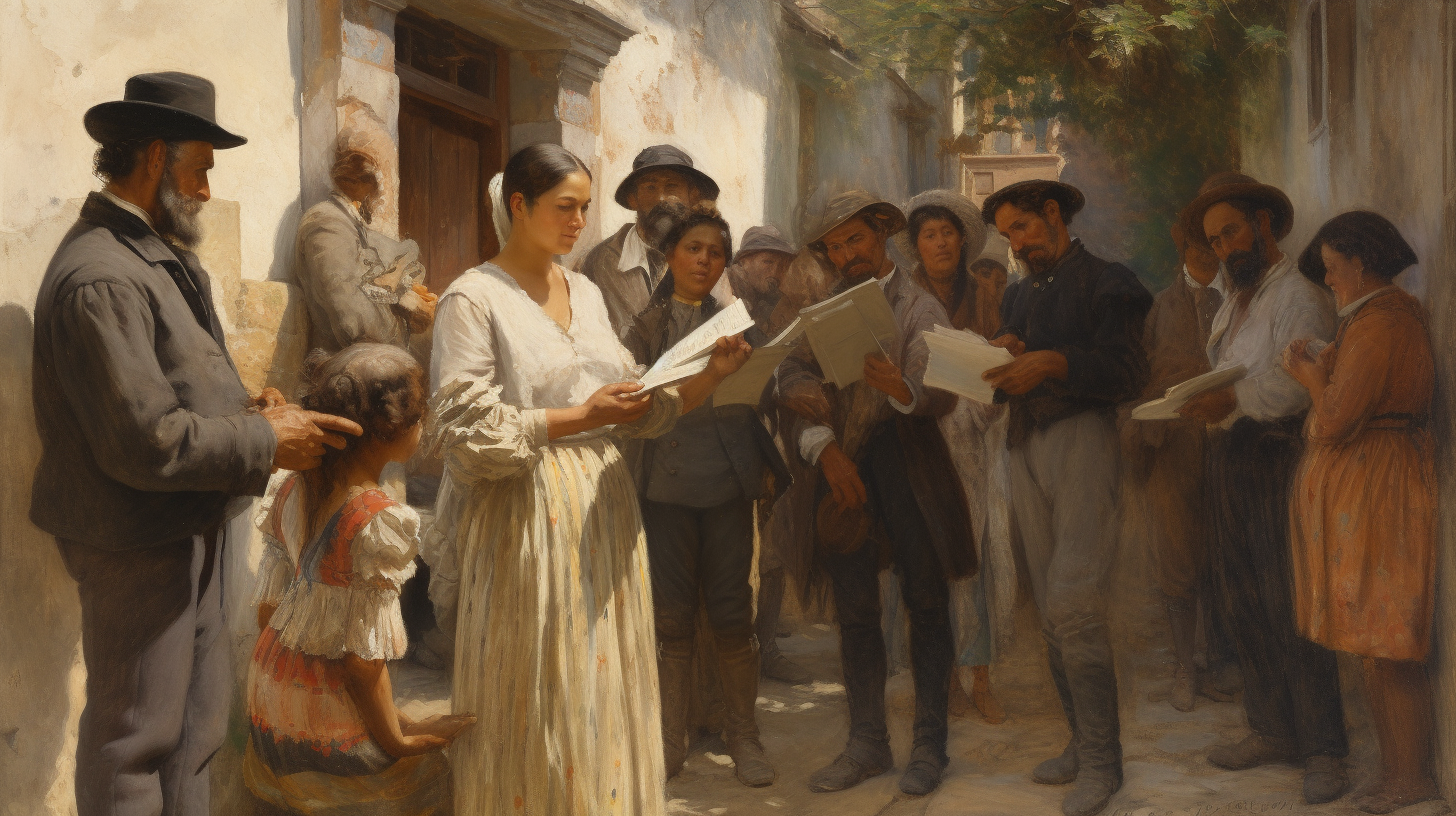
Articles

Mexican States
Southwest United States
Heritage and Governance
The Santa Ynez Mission Indians: Their Struggle for Land
This article explores the origins, languages, and history of the Chumash people, with special attention to the Santa Ynez Mission. We take you through the Mission years, the Secularization, and the subsequent dispute in which the Catholic Church saw the natives as squatters who needed to be evicted from church land [i.e., the Church Lawsuit from 1897 to 1906]. Today, the Santa Ynez Band of Chumash Indians is a federally recognized Native American tribe that has witnessed great success in recent decades, a remarkable transition from the 1890s and Early Twentieth Century.
Exploring Ethnicity in Mexico Today
Mexico’s 2020 Population and Housing Census was conducted in March 2020. More than 147,000 interviewers traveled the nearly two million square kilometers of the national territory, visiting all Mexican households to obtain information about the demographic, socioeconomic and cultural characteristics of the people of each state.
Mexico’s Endangered Languages
Writing in El Economista on July 8, 2024, Ricardo Quiroga recently asked the question (translated into English): “What are the challenges, plans and commitments acquired by the incoming federal administration in Mexico, headed by the President-Elect Claudia Sheinbaum Pardo, regarding indigenous languages?”[1] Quiroga noted that the new Mexican Government headed by the climate scientist and former Mexico City Mayor Claudia Sheinbaum would serve “a self-identified indigenous population of 25.7 million people” [According to the INEGI 2020 Population and Housing Census]. This population represents 21.5% of the total population in the country.
How Many Languages Are Spoken in Mexico?
This article discusses the age-old question of how many languages are spoken in Mexico? The answer is not an easy one because none of the sources are in agreement about that topic. This article will discuss INALI’S three-tiered approach to Mexico’s languages, as well as the estimates provided by other sources.
Spanish Immigration to Mexico
From 1521 to 1821, Mexico was a colony of Spain. During this period, hundreds of thousands of Spaniards crossed the Atlantic to begin new lives in the Americas. But the newly independent nation of Mexico – bitter from three centuries of sometimes oppressive colonial rule – enacted legislation to ban and expel many Spanish immigrants. However, relations between Spain and Mexico improved after Spain recognized Mexico’s independence (1836). Recognizing the similarities of their linguistic and cultural heritage, millions of Spaniards would make their way (or flee) to Mexico during the next century-and- a-half.
Ethnic Identity in the 2020 Mexican Census
Mexico’s 2020 Population and Housing Census was conducted in March 2020. More than 147,000 interviewers traveled the nearly two million square kilometers of the national territory, visiting all Mexican households to obtain information about the demographic, socioeconomic and cultural characteristics of the people of each state. Finally, in January 2021, Mexico proudly became the first country in the world to announce the results of its 2020 census. The censuses of many other countries had to be delayed or postponed because of the COVID Pandemic.
The 1921 Mexican Census: A Study of Racial Classifications and Languages
Mexico’s 1921 General Census of Inhabitants was the fourth of its kind to be carried out in the country. The census presented information as of November 30 of that year. Mexico’s 1921 census asked its 14.3 million inhabitants to categorize themselves by three primary categories: Pure Indigenous, Indigenous Mixed with White, and White.
Indigenous Mexico and the Spanish Language
Today, more than 7 million of Mexico’s 126 million people speak 364 Indian linguistic variants (dialects), but almost 90% of those people are bilingual, speaking both Spanish and an Indigenous language. Those who do not speak Spanish are called monolingual.
The 1895 Mexican Census: Mexico’s Languages
The census of 1895 was the first national census of Mexico. Its tabulations provide us with the first window into the condition of the indigenous languages spoken in the Mexican Republic before the dawn of the Twentieth Century. The census also provides some perspective on the presence of extranjeros (foreigners) and their languages two decades into the Porfiriato of Porfirio Díaz (1876-1911).
Mexico’s Great Diversity in the 2020 Census
When Spanish soldiers arrived in Mexico in 1519, native people ranged through every part of the country that was eventually made into a colony of Spain. It is estimated that at least 200 languages were spoken through this entire area at the time.
The Germans and French in Mexico
According to Professor Jürgen Buchenau, Mexico has proven to be a "salad bowl," instead of a "melting pot“ mainly because "most immigrant families sought to retain their native languages and customs.“ Two of the largest immigrant groups in Mexico were the Germans and the French and many of them formed “enclaves” in which they could maintain their own cultural integrity.
Indigenous Sonora and the Census
When the Spaniards first reached Sinaloa and Sonora in 1531, they found indigenous people living along the coastal region. Speaking eighteen closely related dialects, the Cáhita peoples of Sinaloa and Sonora numbered about 115,000 and were the most numerous of any single language group in northern Mexico. The Spaniards called them "ranchería people.“
Indigenous Mexico in the 2020 Census: A State-by-State Analysis
Mexico’s 2020 Population and Housing Census was conducted in March 2020. More than 147,000 interviewers traveled the nearly two million square kilometers of the national territory, visiting all Mexican households to obtain information about the demographic, socioeconomic and cultural characteristics of the people of each state.
The Germans In Mexico (1821-1910)
The German Merchant Colony in Mexico
Mexico became independent from Spain in 1821 after an eleven-year armed struggle against that European nation which had colonized it since 1519. The subsequent period from 1821 to 1876 was a period of great instability and economic stagnation for Mexico. During this period Mexico was ravaged by civil wars between rival generals, as well as foreign wars against other countries (Spain, United States, France).
Indigenous Oaxaca and the Census
Oaxaca is characterized by extreme geographic fragmentation with extensive mountain systems, wide tropical coastal plains and fertile valleys. The entire state is very mountainous, being crossed by three cordilleras:
1. The Sierra Madre Oriental in western Oaxaca.
2. The Sierra Madre del Sur covers 70% of the state territory.
3. The Sierra Atravesada in the region of the Isthmus of Tehuantepec.
The 2020 Census: An Ethnic Overview of Mexico
Mexico’s 2020 Population and Housing Census was conducted in March 2020. More than 147,000 interviewers traveled the nearly two million square kilometers of the national territory, visiting all Mexican households to obtain information about the demographic, socioeconomic and cultural characteristics of the people of each state.
Indigenous Hidalgo and the Census
From 1895 to 2015, the Mexican census has painted a picture of Mexico’s people, providing details about languages spoken (Spanish, foreign and indigenous), religion, education, literacy, employment and migration. From the beginning, the Mexican census provided details about indigenous languages spoken by its citizens. However, in the first half century, it is possible that there were undercounts of indigenous language speakers because some may have failed to declare their language status for fear of affecting their position within the community. In addition, poor communications channels with rural, isolated indigenous communities may also have caused an undercount of the indigenous people.
Indigenous Chiapas and the Census
From 1895 to 2015, the Mexican census has painted a picture of Mexico’s people, providing details about languages spoken (Spanish, foreign and indigenous), religion, education, literacy, employment and migration. From the beginning, the Mexican census provided details about indigenous languages spoken by its citizens. However, in the first half century, it is possible that there were undercounts of indigenous language speakers because some may have failed to declare their language status for fear of affecting their position within the community. In addition, poor communications channels with rural, isolated indigenous communities may also have caused an undercount of the indigenous people.
Monolingualism in Mexico (2010)
Mexico’s Census agency is the Instituto Nacional de Estadística y Geografía (INEGI) — known to Americans as the National Institute of Statistics and Geography. Every ten years, INEGI publishes a census showing various population statistics for all residents living in Mexico.
Los Extranjeros in Mexico (1895-2010)
Immigration to Mexico
From the early Sixteenth Century to the end of the Nineteenth Century, Mexico saw a continuous surge of immigrants from Spain. But several other countries — most notably Portugal, Italy, Germany, France, the Philippines and China — also contributed a steady stream of immigrants to various parts of Mexico through the centuries. Immigration from North America and other parts of Latin America and the Caribbean has also been healthy over the long haul.

Article Categories
- Aguascalientes 14
- Arizona 4
- Baja California 5
- Baja California Sur 2
- California 19
- Campeche 4
- Census 36
- Chiapas 3
- Chihuahua 11
- Coahuila 7
- Colima 1
- Conquistador Chronicles 2
- Durango 2
- Ethnic Identity 40
- Genealogy 35
- Guanajuato 8
- Guerrero 8
- Hidalgo 2
- Indigenous Insights 97
- Jalisco 25
- Mexico City 11
- Michoacan 7
- Morelos 4
- Nayarit 3
- New Mexico 4
- Nuevo Leon 7
- Oaxaca 6
- Politics 10
- Puebla 5
- Queretaro 1
- Quintana Roo 4
- San Luis Potosi 11
- Sinaloa 6
- Sonora 16
- Southwest US 26
- State of Mexico 5
- Tabasco 3
- Tamaulipas 11
- Texas 7
- Tlaxcala 7
- Veracruz 6
- Yucatan 6
- Zacatecas 13





















